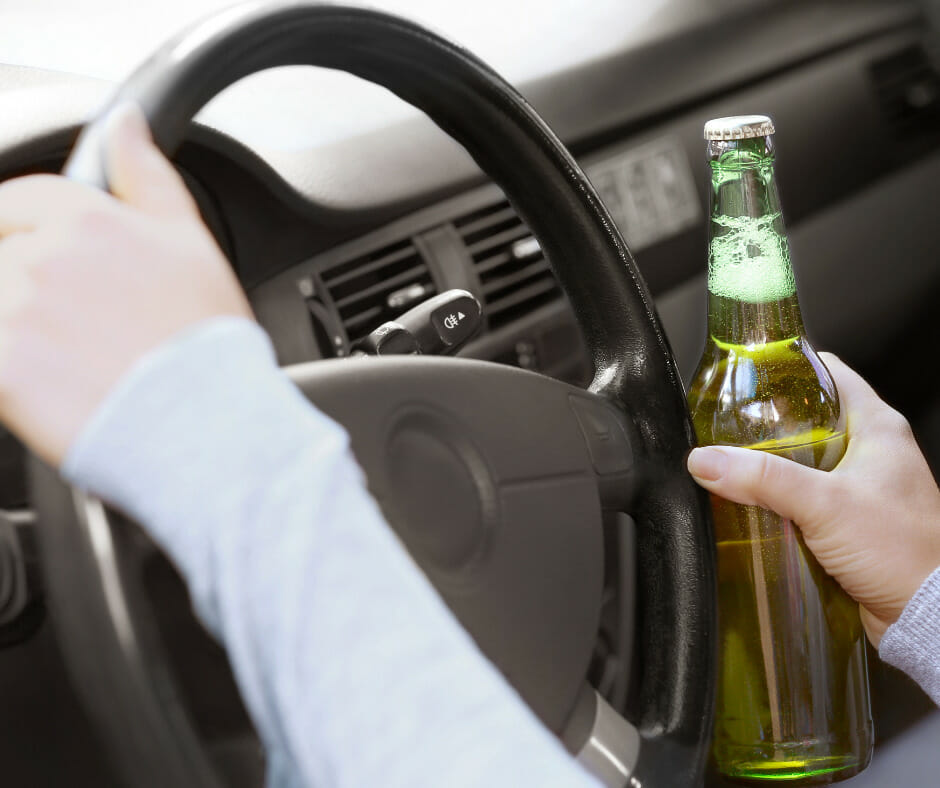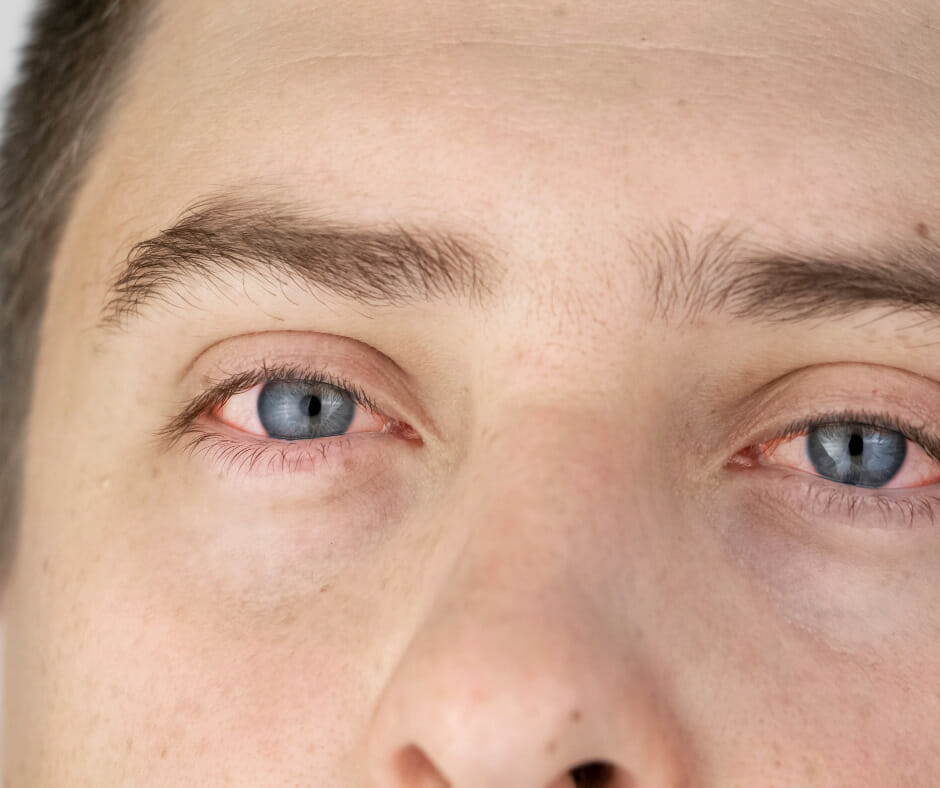Substance abuse and dependency are significant issues that affect individuals and communities worldwide. Understanding the complexities of these issues is crucial in order to address them effectively. This comprehensive discussion aims to provide insights into substance abuse and dependency, covering various aspects of this topic.
Introduction to Substance Abuse and Dependency
Substance abuse refers to the excessive and harmful use of drugs or substances that can lead to negative consequences on an individual’s physical, mental, and social well-being. Substance dependency, also known as addiction, is a condition wherein a person becomes reliant on a particular substance and experiences withdrawal symptoms when attempting to stop using it.
Understanding Substance Abuse
To comprehend substance abuse fully, it is essential to define drugs and substances and examine the concept of substance abuse itself. Drugs and substances encompass a wide range of chemical compounds that can alter brain function and create psychoactive effects. Substance abuse refers to the misuse or overuse of these drugs and substances, resulting in detrimental effects on an individual’s health, relationships, and overall life.
Types of Substances Abused
Various categories of substances are commonly abused by individuals struggling with dependency. These include:
- Stimulants: These substances, such as cocaine and amphetamines, increase alertness and energy levels.
- Depressants: Examples of depressants include alcohol, benzodiazepines, and opioids, which slow down the central nervous system, leading to relaxation and sedation.
- Hallucinogens: Substances like LSD and psilocybin mushrooms alter perception, thoughts, and feelings, often resulting in hallucinations.
- Opioids: These powerful pain-relieving drugs, including heroin and prescription medications like oxycodone, can induce a sense of euphoria and pain relief.
- Inhalants: Commonly found household products like glue, paint thinner, and aerosols, when inhaled, can produce mind-altering effects.
Causes and Risk Factors of Substance Abuse
Multiple factors contribute to the development of substance abuse. While each individual’s situation is unique, common causes include underlying mental health disorders, genetic predisposition, social and environmental influences, peer pressure, and a history of trauma or abuse.
Signs and Symptoms of Substance Abuse
Recognizing the signs and symptoms of substance abuse is essential for early intervention. Physical signs may include changes in appetite, sleep disturbances, weight loss, or gain. Behavioral signs can include secretive behavior, decreased motivation, and impaired performance. Psychological signs may manifest as mood swings, irritability, anxiety, or depression.
Dangers and Consequences of Substance Abuse
Substance abuse comes with a range of dangers and consequences. Short-term effects can include impaired judgment, risk-taking behavior, loss of coordination, and accidents. Long-term effects may involve physical and mental health complications, damaged relationships, financial hardships, legal issues, and an overall deterioration in quality of life.
Treatment and Recovery Options for Substance Abuse
Treatment for substance abuse often involves a combination of approaches tailored to meet individual needs. Options include detoxification, inpatient rehabilitation programs, outpatient rehabilitation programs, counseling, support groups, and therapy. The goal is to help individuals overcome dependency, manage cravings, and develop coping skills to sustain long-term recovery.
Prevention and Education on Substance Abuse
Preventing substance abuse requires a multi-faceted approach. Strategies may include raising awareness, implementing community programs, providing education on the dangers of substance abuse, promoting healthy coping mechanisms, addressing social and environmental risk factors, and fostering a supportive and drug-free environment.
By delving into the various aspects of substance abuse and dependency, this discussion aims to provide a comprehensive understanding of these issues, highlighting the importance of prevention, education, early intervention, and effective treatment in addressing this global concern.

Substance misuse
Substance misuse refers to the excessive and inappropriate use of drugs and alcohol, which can have negative effects on physical and mental health. It can lead to impaired judgement, accidents, injuries, and even overdose. Substance misuse also affects relationships, work or school performance, and overall functioning in daily life.
Recognizing signs such as increased tolerance, withdrawal symptoms, lack of control over substance use, and continued use despite negative consequences is crucial. Prevention and early intervention, through education and awareness campaigns, are necessary to promote healthier choices and provide support for individuals struggling with substance misuse.
Effective treatment includes therapy, support groups, and medication-assisted treatments when needed. By understanding substance misuse and taking proactive steps to address it, individuals can improve their overall well-being and reduce the negative impact of substance abuse in their lives.
Alcohol use disorder
Alcohol use disorder is serious and can harm health and well-being. Understanding the facts and implications of this disorder is important.
Alcohol use disorder involves excessive and problematic drinking. It is a chronic condition that can result in physical and psychological dependence on alcohol.
People with alcohol use disorder may have a strong desire to drink and need more alcohol to achieve the desired effects. This can lead to tolerance and withdrawal symptoms when alcohol consumption is reduced or stopped.
Developmental factors and genetic predisposition contribute to the risk of developing alcohol use disorder. Environmental factors, such as family relationships and lifestyle problems, also play a role.
Signs and symptoms of alcohol use disorder can vary. Physical signs may include impaired coordination, slurred speech, and blackouts. Behavioral signs may include neglecting responsibilities, legal issues, and continued drinking despite negative consequences. Psychological signs may involve withdrawal from social activities, mood swings, and continued alcohol use despite significant problems.
Long-term effects of alcohol use disorder can impact physical health, mental health, and overall quality of life. Chronic alcohol abuse can damage the liver, cause cardiovascular problems, and increase the risk of certain types of cancers. It can also contribute to mental health disorders such as depression and anxiety.
Treatment options for alcohol use disorder include detoxification, inpatient and outpatient rehabilitation programs, and participation in support groups and therapy. Behavioral therapies, like cognitive-behavioral therapy, can be effective in helping individuals overcome addiction and achieve long-term recovery.
Preventing alcohol use disorder is important and can be achieved through prevention policies and public health approaches. Education on the dangers of alcohol abuse and awareness campaigns can also play a crucial role in reducing the incidence of alcohol use disorder.
If you or someone you know is struggling with alcohol use disorder, it is essential to seek professional help and support. Recovery is possible with the right treatment and support.
Historical views and recognition as a medical brain disorder
Historically, substance abuse has been perceived as a moral failing or a lack of willpower. However, our understanding has progressed, and we now acknowledge it as a medical brain disorder based on scientific research. Substance abuse was once stigmatized and judged, but with advancements in neuroscience, we now know that it is a complex interplay of genetic, environmental, and neurobiological factors.
Recognizing substance abuse as a medical brain disorder shifts the blame away from individuals and highlights that addiction is a chronic brain disease. This comprehension allows for more compassionate and effective treatment approaches. It has also resulted in evidence-based treatments that target the underlying causes, rewire the reward center of the brain, and offer support for recovery.
This recognition signifies a shift in how we perceive and address addiction, putting emphasis on the significance of support, resources, and the reduction of stigma.
The concept of substance use disorder
The concept of substance use disorder is fundamental when discussing substance abuse and dependency. Substance use disorder is a chronic brain disorder that affects an individual’s control over their substance use, characterized by recurrent use despite negative consequences.
One crucial aspect of substance use disorder is the repeated use of drugs or substances. Individuals with this disorder struggle to quit or reduce their substance use, even when they desire to. Signs of substance use disorder include overpowering desires and higher dose requirements.
Developmental and addiction potential factors also contribute to substance use disorder. Genetic and environmental factors, such as family substance abuse, increase the risk of developing the disorder. Neurobiological science has shown that substance use activates the brain’s reward center, increasing the likelihood of addiction.
It’s important to differentiate between substance misuse and substance use disorder. Substance misuse refers to improper or excessive substance use, while substance use disorder is a diagnosable medical condition. Specific criteria outlined in the Diagnostic and Statistical Manual of Mental Disorders (DSM-5), including impaired control, social impairment, risky use, and pharmacological criteria, characterize substance use disorder.
Understanding substance use disorder helps recognize its seriousness and the need for appropriate treatment and support. Treatment options like detoxification, inpatient rehabilitation, outpatient rehabilitation, and support groups can aid recovery and regain control. Substance abuse education and awareness campaigns can contribute to prevention efforts and promote better understanding in society.
Differences between substance misuse and substance use disorder
Differences between substance misuse and substance use disorder can be summarized in a table:
| Substance Misuse | Substance Use Disorder |
| Use of a substance not as intended or recommended, resulting in negative consequences. | Diagnosable medical condition characterized by impaired control over substance use, leading to distress and negative impacts on life. |
| May involve occasional or infrequent substance use. | Compulsive and habitual substance use, with difficulty quitting or cutting back despite negative consequences. |
| Lacks diagnostic criteria for substance use disorder diagnosis. | Meets diagnostic criteria in the Diagnostic and Statistical Manual of Mental Disorders (DSM-5) for substance use disorder. |
| Associated with recreational or experimental substance use. | More chronic and severe pattern of substance misuse, often leading to addiction. |
| May not lead to physical and psychological dependence on the substance. | Characterized by physical and psychological dependence on the substance, with withdrawal symptoms upon cessation. |
It is important to note that substance misuse can potentially progress to substance use disorder if the use becomes more frequent and problematic. Identifying and addressing substance misuse early can help prevent the development of a substance use disorder. Treatment options are available for both substance misuse and substance use disorder, with the goal of promoting recovery and reducing harm.

Understanding Substance Abuse
Substance abuse is a critical issue that affects both individuals and communities worldwide. In order to effectively tackle this problem, it is imperative to have a comprehensive understanding of substance abuse. Here are some key aspects to consider:
-
Substance abuse entails the excessive or harmful use of drugs or alcohol, leading to adverse consequences for both the individual and the people around them.
-
Substance abuse can have severe physical and mental health implications. Prolonged substance abuse can result in addiction, which is a chronic and relapsing condition.
-
Substance abuse is a complicated problem influenced by various factors such as genetic predisposition, environmental factors, and mental health conditions. It involves multiple underlying elements.
-
Substance abuse can impact individuals of all ages, genders, and backgrounds, regardless of whether they reside in urban or rural communities.
-
Prevention and early intervention are vital in addressing substance abuse. Educational programs and awareness initiatives can help individuals comprehend the risks and consequences associated with substance abuse.
-
Treatment options for substance abuse encompass therapy, medication, and support groups. It is crucial for individuals struggling with substance abuse to seek professional assistance.
-
The support of family, friends, and the community plays a pivotal role in helping individuals recover from substance abuse. Establishing a supportive and understanding environment is essential for long-term recovery.
Understanding substance abuse is essential in effectively addressing this issue. By being knowledgeable about the contributing factors and available treatment options, we can strive towards preventing substance abuse and providing support to those impacted by it.
What Are Drugs and Substances?
Drugs and substances, also known as chemical compounds, have the ability to alter an individual’s physical and mental state. These compounds can come in various forms such as pills, liquids, powders, or even gaseous substances. The effects that these substances have on the body differ based on their chemical composition and how they interact with the brain and central nervous system.
There are different categories of drugs and substances, each with their own characteristics. Some of them act as stimulants, which means they increase alertness, energy levels, and heart rate. Examples of these stimulants include cocaine, amphetamines, and caffeine. On the other hand, there are depressants that slow down brain activity and induce relaxation or sedation. Alcohol, barbiturates, and benzodiazepines fall under this category. Additionally, there are hallucinogens that alter perception, sensory experiences, and even cause hallucinations. LSD, psilocybin mushrooms, and peyote are examples of hallucinogens.
Opioids are substances that act on opioid receptors in the brain to relieve pain and produce feelings of euphoria. Heroin, morphine, and prescription pain medications like oxycodone are examples of opioids. Inhalants, on the other hand, produce mind-altering effects when inhaled. These can include household solvents, aerosol sprays, and gases.
It’s crucial to understand that drugs and substances can have various effects and risks, potentially leading to dependence, addiction, and various health complications. Being knowledgeable about the different types of drugs and substances can help individuals make informed decisions regarding their use and understand the potential risks involved.
To combat substance abuse, it’s imperative to educate individuals about the effects and risks of drugs and substances. Awareness campaigns and prevention policies play a significant role in reducing substance abuse rates and promoting healthier lifestyles. Seeking professional help through detoxification, inpatient or outpatient rehabilitation, and support groups and therapy can aid individuals struggling with substance abuse in the treatment and recovery process.
What Is Substance Abuse?
When it comes to substance abuse, it is important to understand its definition and characteristics. Here are some key points to consider:
– Substance abuse refers to the repeated use and consumption of drugs or substances, often accompanied by an overpowering desire for the substance and increased dosage over time. Developmental factors can also contribute to addiction.
– Substances commonly abused can be categorized into types such as stimulants, depressants, hallucinogens, opioids, and inhalants. Each type has its own effects and risks.
– Causes and risk factors for substance abuse include genetic influences, environmental factors, neurobiological science, and activation of the brain’s reward center. Family relationships, lifestyle problems, mental health conditions, and legal issues can also increase the risk.
– Recognizing signs and symptoms of substance abuse is crucial. Physical signs may include changes in appearance, unexplained weight loss or gain, and changes in sleep patterns. Behavioral signs may include secretive behavior, financial difficulties, and legal problems. Psychological signs may include withdrawal from social activities, interference with relationships, and continued substance use despite problems.
– Dangers and consequences of substance abuse can be short-term or long-term. Short-term effects may include impaired judgment, decreased coordination, and potential overdose. Long-term effects can impact physical and mental health, as well as overall quality of life. Substance abuse can also lead to chronic illnesses and societal consequences.
– Treatment and recovery options are available for those struggling with substance abuse, such as detoxification, inpatient rehabilitation, outpatient rehabilitation, support groups, and therapy. Behavioral therapies and recovery support services play a crucial role in the recovery process, with healthcare providers providing necessary care and support.
– Prevention and education are essential in addressing substance abuse. Prevention policies and public health approaches can help reduce prevalence. Education and awareness campaigns provide individuals with the knowledge and resources to make informed decisions.
By understanding substance abuse and its various aspects, individuals and communities can work towards addressing and preventing this issue.

Types of Substances Abused
When it comes to substance abuse, there is a wide range of substances that can be potentially harmful. In this section, we’ll dive into the various types of substances that are commonly abused, including stimulants, depressants, hallucinogens, opioids, and inhalants. Get ready to explore the effects and characteristics of each of these substances, shedding light on the alarming realities of substance dependency. Let’s uncover the facts and delve into this essential topic.
Stimulants
Stimulants increase brain and central nervous system activity, causing alertness, energy, and euphoria. However, it’s essential to be aware of the risks and effects associated with these drugs.
– Increased energy and alertness: Stimulants boost energy levels and improve focus.
– Improved mood: Stimulant drugs enhance mood, leading to happiness and euphoria.
– Increased heart rate and blood pressure: Stimulants raise heart rate and blood pressure, which can be dangerous for individuals with heart problems or hypertension.
– Reduced appetite: Stimulants suppress appetite, which may be desirable for weight loss, but can lead to malnutrition and other health issues.
– Risk of addiction: Stimulants are highly addictive and can lead to dependence and withdrawal symptoms.
It’s crucial to use stimulant drugs only under the supervision of a healthcare professional and for legitimate medical purposes. Non-medical use is illegal and has serious health consequences.
True story: Sarah, a college student, used stimulant medications without a prescription to study for exams. Initially, she experienced increased focus and productivity. However, she developed a dependency and started using them recreationally, leading to insomnia, anxiety, and heart palpitations. Eventually, Sarah sought help and entered a rehabilitation program to overcome her addiction.
Depressants
Depressants are substances that slow down brain activity and nervous system function, producing a calming or sedating effect. Common depressants include alcohol, benzodiazepines (such as Xanax and Valium), barbiturates, and sleep medications like Ambien. They can induce relaxation, drowsiness, and reduce anxiety, but also impair coordination, judgment, and reaction times.
Misuse or overuse of depressants can lead to dependency, addiction, and potential overdose. Mixing depressants with other substances or medications increases the risk of harmful interactions. Abruptly stopping the use of depressants can result in withdrawal symptoms such as insomnia, tremors, irritability, and seizures. Seek medical assistance when discontinuing use.
Depressants have legitimate medical uses for treating anxiety, sleep disorders, and seizure disorders, but should only be used under professional supervision. It is important to avoid combining depressants with alcohol or other substances that depress the central nervous system, as this can magnify their effects and increase the risk of adverse reactions.
If you or someone you know is struggling with substance abuse, seek help from a healthcare professional or addiction specialist for guidance, support, and appropriate treatment options to promote recovery and well-being.
Hallucinogens
Hallucinogens alter perception, mood, and cognitive processes. They produce hallucinations and sensory distortions. Consider these key points:
1. Hallucinogens cause profound changes in thoughts, emotions, and perceptions. Examples include LSD, psilocybin mushrooms, peyote, and DMT.
2. These substances interact with serotonin receptors in the brain, specifically the 5-HT2A receptors, leading to altered sensory perception and hallucinations.
3. Effects vary depending on the substance, dosage, and individual. Common effects include visual hallucinations, mood changes, altered perception of time, spiritual experiences, and enhanced creativity.
4. Hallucinogens are not physically addictive like opioids or stimulants, but psychological dependence can develop, leading to cravings and repeated use.
5. The use of hallucinogens carries risks. They don’t cause physical harm or overdose, but their effects can be unpredictable and vary between individuals.
6. Misusing hallucinogens can have negative consequences, including impaired judgment, accidents, psychological distress, and worsening of underlying mental health conditions.
7. Approach hallucinogens with caution and in safe environments. Effects can be intense, so it’s important to have support and trust.
Understanding hallucinogens helps individuals make informed decisions and minimize risks. Prioritize safety and consider individual factors before using these substances.
Opioids
Opioids are highly addictive substances that can have serious consequences. They work by blocking pain signals and creating a feeling of euphoria. While they can be prescribed for severe pain, they are also illegally sold on the black market.
Opioid abuse can lead to dependence, overdose, and death. Opioid overdose deaths have been increasing, highlighting the urgency of addressing this issue.
Signs of opioid misuse can include drowsiness, constricted pupils, and slowed breathing. Behavioral signs may include secretive behavior, social withdrawal, and neglecting responsibilities. Psychological signs may include mood swings, irritability, and changes in motivation.
Treatment options for opioid abuse include detoxification, inpatient rehabilitation, outpatient rehabilitation, and support groups. Detoxification helps individuals safely withdraw from opioids, while counseling and support in rehabilitation programs address underlying issues.
Prevention and education play a crucial role in combating opioid abuse. Public health approaches like prescription drug monitoring programs and naloxone kits can help prevent overdose deaths. Educating about the risks of opioids and alternative pain management methods is also important.
It is essential to recognize the dangers of opioid abuse and take steps to address this issue to protect individuals and communities.
Inhalants
Inhalants are substances that can be abused and have various effects and risks. They produce chemical vapors that can be inhaled for a psychoactive effect. Examples include glue, paint thinners, aerosol sprays, and cleaning products.
Inhalant use can have immediate and dangerous effects. When inhaled, these substances quickly enter the bloodstream and affect the central nervous system. They can cause dizziness, confusion, lightheadedness, and loss of consciousness. Inhalants can also result in nausea, vomiting, and impaired coordination.
One major risk of inhalant use is potential long-term damage to organs such as the liver, kidneys, and lungs. It can also cause memory loss, cognitive impairment, and psychological issues.
Recognizing signs of inhalant abuse is important, such as a strong chemical odor on breath or clothing, paint or stains on the face or hands, and sudden changes in behavior or mood. If inhalant abuse is suspected, it is crucial to encourage seeking help from a healthcare professional or addiction specialist.
Preventing inhalant abuse involves raising awareness about the dangers and risks. Education campaigns and prevention programs provide information and promote healthy alternatives. Creating a supportive environment and providing access to resources and treatments is essential for individuals at risk.

Causes and Risk Factors of Substance Abuse
There are several causes and risk factors that contribute to substance abuse. Understanding these factors is important in order to prevent and address substance abuse effectively. Here are some key factors to consider:
- Genetics: Studies have shown a genetic predisposition to substance abuse. Individuals with a family history of substance abuse are more likely to develop addiction.
- Environmental factors: The environment in which a person grows up plays a significant role in their susceptibility to substance abuse. Factors such as peer pressure, family dysfunction, trauma, and drug exposure can increase the risk.
- Mental health disorders: People with mental health disorders like depression, anxiety, or ADHD are at a higher risk of developing substance abuse problems. Substance abuse may be used to self-medicate or cope with underlying mental health issues.
- Early exposure: The age at which a person is first exposed to drugs or alcohol can influence their likelihood of developing substance abuse problems. Early exposure increases the risk of addiction later in life.
- Social and economic factors: Socioeconomic factors like poverty, unemployment, and lack of access to education and resources can contribute to substance abuse. These factors create stressors and increase the likelihood of turning to substances for relief.
These causes and risk factors need to be addressed through education, prevention programs, early intervention, and proper treatment and support services. By understanding and addressing these factors, we can work towards reducing substance abuse in our communities.
What Leads to Substance Abuse?
“What Leads to Substance Abuse?
Substance abuse is influenced by several factors, including genetics, the environment, neurobiological science, and the activation of reward centers in the brain. Genetic factors play a role in increasing the risk of developing a substance use disorder by affecting drug metabolism. Environmental factors, such as growing up in a household with substance abuse, having a family history of addiction, or experiencing abuse, can also contribute to substance abuse. Additionally, peer pressure, easy access to drugs, and socioeconomic factors act as additional contributors. Substances have a direct impact on the brain’s reward center, which leads to addiction. It is crucial to understand these various factors in order to develop effective prevention and intervention strategies. Collaboration among healthcare providers, educators, and policymakers is essential in addressing genetic, environmental, and neurobiological factors to reduce the risk of substance abuse. Implementing evidence-based strategies like prevention policies, public health approaches, and awareness campaigns is vital for prevention and education. By addressing the root causes of substance abuse, society can better prevent and address this significant public health issue.”
What Are the Risk Factors for Substance Abuse?
What Are the Risk Factors for Substance Abuse?
The risk factors for substance abuse are influenced by a combination of genetic, environmental, and psychological factors. These factors contribute to the likelihood of developing a substance use disorder. Here are some common risk factors to consider:
1. Family relationships: Upbringing and family dynamics play a significant role in the risk of substance abuse. Factors such as parental substance abuse, family conflict, neglect, or abuse can increase the risk.
2. Lifestyle problems: Several factors contribute to the risk of substance abuse, including social isolation, peer pressure, a lack of positive coping skills, or a history of trauma.
3. Mental health conditions: Individuals with mental health disorders are more susceptible to substance abuse. Conditions such as depression, anxiety, bipolar disorder, or post-traumatic stress disorder can increase the risk.
4. Substance-related legal problems: A history of legal issues associated with substance abuse, such as DUI offenses or drug possession charges, increases the risk.
5. Genetic factors: Research indicates a genetic component in substance abuse. Having close relatives with a history of substance abuse increases the risk.
6. Environmental factors: The risk of substance abuse is influenced by the environment and exposure to drugs or alcohol. Factors such as living in a neighborhood with a high prevalence of drug use or easy access to substances can increase the risk.
7. Neurobiological science: Changes in the brain’s reward center and neurotransmitter systems can increase the risk of substance abuse. Some individuals may have a higher susceptibility to the pleasurable effects of drugs or a diminished ability to regulate their impulses.
Understanding these risk factors helps identify individuals at a higher risk for substance abuse. Early addressing through prevention efforts, education, and targeted interventions can reduce substance abuse and promote healthier communities.
It’s important to remember that each individual’s risk factors for substance abuse are unique, and addressing this issue requires a personalized approach. Seeking support from healthcare professionals, counselors, and support groups can provide valuable guidance and assistance.

Signs and Symptoms of Substance Abuse
Unveiling the telltale signs of substance abuse, we dive into a realm where physical, behavioral, and psychological indicators offer insight into one’s dependency. With each sub-section presenting its piece of the puzzle, we explore the visible manifestations, actions, and mental manifestations that may indicate substance abuse. Delve into the world of signs and symptoms as we shed light on the intricacies of substance dependency.
Physical Signs of Substance Abuse
Recognizing the physical signs of substance abuse is crucial for identifying and addressing potential problems related to drug or alcohol misuse. These signs can vary depending on the substance used, as well as the individual’s tolerance and level of addiction. Here are some naturally incorporated physical signs of substance abuse:
– Changes in appetite and weight: Substance abuse can lead to significant changes in eating habits, resulting in weight loss or gain.
– Bloodshot or glassy eyes: Bloodshot or watery eyes can indicate drug or alcohol intoxication.
– Slurred speech: Impaired speech is often a sign of substance abuse.
– Poor coordination: Substance abuse can affect motor skills and coordination, causing clumsiness, stumbling, or lack of balance.
– Unsteady gait: Individuals under the influence of drugs or alcohol may struggle to walk in a straight line or maintain a steady pace.
– Frequent nosebleeds: Snorting drugs can irritate the nasal passages, leading to recurring nosebleeds.
– Tremors or shaking: Physical trembling or shaking can occur during withdrawal from certain substances or as a result of long-term drug or alcohol use.
– Constricted or dilated pupils: Changes in pupil size can indicate the usage of specific drugs.
It is important to remember that these physical signs alone do not provide confirmation of substance abuse, but they serve as warning signs that should prompt further evaluation and professional help if necessary. If you suspect someone may be struggling with substance abuse, offering support and encouraging them to seek assistance from medical professionals or addiction specialists is vital.
Behavioral Signs of Substance Abuse
Behavioral signs of substance abuse can help in identifying individuals who may be struggling with drug or alcohol addiction. Recognizing these signs is essential in order to provide the necessary support and intervention. Here are some common behavioral signs that may indicate substance abuse:
- Changes in social circles: People experiencing substance abuse often associate with new friends or withdraw from their previous social groups.
- Poor performance at work or school: Substance abuse can lead to a significant decline in productivity, increased absenteeism, or lower academic grades.
- Increased secrecy: Individuals struggling with substance abuse tend to become more secretive about their activities, whereabouts, and relationships.
- Financial problems: Substance abuse can result in financial strain, as individuals might spend a significant amount of money on drugs or alcohol. This can lead to difficulties in paying bills or excessive borrowing.
- Behavioral changes: It is common to observe erratic behavior, mood swings, irritability, agitation, or uncharacteristic hostility in individuals struggling with substance abuse.
If you notice any of these behavioral signs in someone you know, it is important to approach them with care and concern. Encourage open communication and express your willingness to support them in seeking help. Seek guidance and support from healthcare professionals, addiction specialists, or support groups, as they play a crucial role in dealing with substance abuse.
Psychological Signs of Substance Abuse
Psychological signs of substance abuse, such as interfering with friendships and withdrawing from social and recreational activities, can indicate a substance use disorder. People struggling with substance abuse isolate themselves from friends and loved ones, prioritizing substance use over maintaining healthy relationships. This leads to conflicts and a deterioration of social connections.
Another psychological sign is continuing to use the drug despite significant problems, such as job loss, financial difficulties, or legal issues. This inability to control or stop drug use indicates a lack of impulse control and an increased focus on obtaining and using the substance. It’s important to note that these signs alone may not diagnose substance abuse but they serve as indicators and highlight the need for further evaluation and potential intervention.
Pro-tip: If you suspect someone is struggling with substance abuse, approach them with empathy and encourage open communication. Offer support and provide information on available resources such as support groups, therapy, or treatment options. Remember, addressing substance abuse requires a compassionate and non-judgmental approach.
Dangers and Consequences of Substance Abuse
Substance abuse can have grave implications, both in the short-term and long-term. In this section, we’ll explore the dangers and consequences of such abuse, shedding light on the immediate and lasting effects it can have on individuals. From the immediate impact on physical and mental health to the potential for addiction, we’ll delve into the harsh realities of substance abuse. Brace yourself as we uncover the alarming truth behind the short-term and long-term outcomes of this pervasive issue.
Short-Term Effects of Substance Abuse
Short-term effects of substance abuse significantly impact both physical and mental health. Understanding these effects is crucial for comprehending the immediate dangers and consequences.
Physically, substance abuse can cause increased heart rate, elevated blood pressure, and impaired coordination. Symptoms vary depending on the substance. For example, stimulants like cocaine or amphetamines can increase energy, alertness, and aggression. Depressants like alcohol or opioids can induce drowsiness, slowed breathing, and impaired judgment.
Mentally, substance abuse affects cognition, memory, and overall mental functioning. Some individuals may feel euphoria or excitement, while others may become irritable, anxious, or paranoid. Substance abuse also impairs decision-making and increases the likelihood of risky behaviors, leading to negative consequences in various aspects of life.
Recognizing the dangerous and potentially life-threatening nature of short-term substance abuse is crucial. Continued use escalates these effects, increasing the risk of overdose or severe complications.
Treatment and recovery options are essential to address the short-term effects. Detoxification eliminates drugs or substances from the body, and inpatient and outpatient rehabilitation programs provide comprehensive support and therapy to address the root causes of substance abuse. Support groups and behavioral therapies play a vital role in recovery.
Prevention and education are key in addressing substance abuse. Implementing prevention policies and public health approaches can reduce the incidence of substance abuse. Education and awareness campaigns inform individuals about the short-term and long-term risks associated with substance abuse.
By understanding the short-term effects of substance abuse and taking proactive measures, individuals can work towards a healthier, substance-free life.
Long-Term Effects of Substance Abuse
Substance abuse has significant and enduring consequences on both physical and mental health, affecting one’s overall quality of life. The continued use of substances can result in chronic health conditions, including liver cirrhosis or liver cancer due to excessive alcohol consumption and respiratory issues, heart disease, and a weakened immune system resulting from drug abuse. Furthermore, substance abuse escalates the likelihood of developing mental health disorders such as anxiety, depression, or psychosis, which further worsen pre-existing conditions.
It adversely impacts relationships, creates financial hardships, and hampers personal and professional progress, leading to social isolation, reduced productivity, and a loss of interest in activities. To tackle the lasting effects of substance abuse and enhance well-being, it is crucial to seek professional assistance and support through recovery programs, therapy, and support groups. If you or someone you know is grappling with substance abuse, do not hesitate to reach out to healthcare providers or addiction specialists who can offer guidance and support on the journey to achieve sustainable recovery. Remember, seeking help exhibits strength and has the potential to pave the way for a healthier, happier life.

Treatment and Recovery Options for Substance Abuse
Seeking help for substance abuse can be a turning point towards a brighter future. In this section, we will explore various paths to recovery for those fighting against substance dependency. From detoxification to inpatient and outpatient rehabilitation, as well as the support of therapy and support groups, we will dive into the range of treatment options available. Together, we’ll uncover the possibilities that pave the way to a healthier and substance-free life.
Detoxification
Detoxification is crucial in the treatment and recovery of substance abuse. It involves removing toxins and harmful substances from the body to promote healing and recovery from long-term substance abuse.
During detoxification, individuals may experience withdrawal symptoms as their body adjusts to the absence of the substance. These symptoms can vary in severity, depending on the substance and the level of dependence. Common symptoms include nausea, sweating, insomnia, anxiety, and cravings.
Detoxification should always be done under the guidance and supervision of medical professionals in a safe environment. Healthcare providers play a vital role in designing and implementing an individualized detox plan based on specific needs.
The duration of detoxification varies depending on factors such as the type and severity of the addiction, and overall health. Some cases may require only a few days for detox, while others may need a longer period.
Detoxification is the essential first step towards recovery from substance abuse. However, it is important to note that detox alone is not enough for lasting sobriety. Comprehensive treatment programs, including inpatient/outpatient rehabilitation, support groups, and therapy, are necessary to address the underlying causes of substance abuse and develop long-term recovery strategies.
Inpatient Rehabilitation
Inpatient rehabilitation is crucial for individuals struggling with substance abuse. Here are some important aspects to consider:
1. Inpatient rehabilitation provides a structured and supportive environment for individuals with substance abuse disorders.
2. Individuals reside at a treatment center for a specific period, typically ranging from a few weeks to several months.
3. Medical professionals and trained staff are available 24/7 to ensure the safety and well-being of patients.
4. Inpatient rehabilitation programs offer comprehensive and personalized treatment plans that cater to the unique needs of each individual.
5. Treatment approaches often include medical detoxification, counseling, therapy sessions, support groups, and holistic therapies.
6. The setting allows individuals to concentrate solely on their recovery without any distractions or temptations.
7. Skills and coping mechanisms learned during inpatient rehabilitation aid in the development of healthier habits and the prevention of relapse.
8. After completing the program, individuals may transition to outpatient programs or receive ongoing support in order to maintain their recovery.
9. Inpatient rehabilitation has been proven to be effective in overcoming substance abuse and achieving long-term sobriety.
Note: The success of inpatient rehabilitation depends on the individual’s commitment and active participation in their recovery journey.
Outpatient Rehabilitation
Outpatient rehab programs, such as outpatient rehabilitation, comprehensively treat substance abuse by providing flexibility, therapeutic services, a support network, accessible treatment, continuity of care, individualized treatment plans, and education and life skills.
By offering outpatient rehabilitation, individuals struggling with substance abuse can maintain their daily routines while receiving the necessary treatment. They can continue working, attending school, and taking care of their families. In these programs, various interventions like counseling, therapy, and behavioral interventions are offered to address the underlying causes of substance abuse.
Additionally, outpatient rehabilitation programs provide a support network where patients can connect with peers and receive encouragement, understanding, and accountability. These programs are more accessible for individuals who do not require intensive monitoring or medical support, making it a cost-effective option for those with limited financial resources or insurance coverage.
Continuity of care is emphasized in outpatient rehab as it provides ongoing support and relapse prevention even after completing a higher level of care. Treatment plans in these programs are tailored to meet the specific needs of each patient, taking into consideration addiction severity, mental health disorders, and personal goals.
Furthermore, outpatient rehab offers education and practical life skills for maintaining recovery in everyday life. This includes stress management and relapse prevention techniques.
Overall, outpatient rehabilitation is a valuable option for individuals seeking recovery while managing their daily responsibilities.
Support Groups and Therapy
Support groups and therapy play a crucial role in the treatment and recovery from substance abuse. Behavioral therapies, such as cognitive-behavioral therapy, are effective in identifying and addressing negative thought patterns and behaviors associated with substance abuse. These therapies also help individuals develop coping mechanisms, problem-solving skills, and healthier ways to manage stress.
Recovery support services, including case management and peer support, provide ongoing assistance and guidance throughout the journey to sobriety. These services create a network of support, helping individuals navigate challenges, access necessary resources, and maintain their recovery.
Inpatient rehabilitation programs, which require residing in a facility for a specific period, offer structured treatment plans. These plans include counseling, group therapy, and support groups, all within a safe and monitored environment. Inpatient programs provide intensive support and supervision, especially during the early stages of recovery.
On the other hand, outpatient rehabilitation programs allow individuals to receive treatment while living at home. These programs offer flexibility, with therapy sessions and support groups attended while still maintaining daily responsibilities. The intensity and duration of outpatient programs can be adjusted based on individual needs.
Healthcare providers, such as doctors, psychologists, and addiction specialists, play a vital role in the treatment and recovery process. They assess individual needs, develop personalized treatment plans, prescribe medication if necessary, and provide ongoing medical support and monitoring.
Support groups and therapy create a sense of community, understanding, and accountability. They provide a space for individuals to share their experiences, struggles, and successes with others who can relate. Through these programs, individuals receive valuable support, guidance, and encouragement on their journey towards a substance-free life.
Prevention and Education on Substance Abuse
Prevention and education on substance abuse are crucial in addressing this issue. It is essential to raise awareness and provide knowledge about the dangers and consequences of drug and substance abuse. Here are key strategies for prevention and education:
-
Early intervention: It is important to identify and address risk factors in individuals, such as mental health issues or a family history of substance abuse. Providing support and resources can help these individuals develop healthy coping mechanisms.
-
Evidence-based programs: Implementing prevention programs in schools, colleges, and communities is essential. These programs should focus on building life skills, enhancing resilience, and promoting positive decision-making.
-
Public campaigns: Creating awareness campaigns that highlight the dangers of substance abuse is crucial. These campaigns should target both young people and adults and provide clear information about the risks associated with drug and alcohol misuse.
-
Peer support and mentoring: Encouraging the development of support groups and mentoring programs for individuals at risk of substance abuse is important.
-
Collaboration and partnerships: Foster collaboration between educational institutions, healthcare providers, community organizations, and law enforcement agencies to develop integrated approaches to prevention and education.
Through effective prevention and education initiatives, we can empower individuals to make informed decisions and prevent substance abuse.
In a small town in Iowa, high school students organized a community event to raise awareness about substance abuse. They invited experts to talk about the dangers of drug and alcohol misuse, set up informational booths, and distributed educational materials to young people and parents. Their efforts paid off, as they saw an increase in students seeking help and a decrease in drug use among their peers. This inspiring story showcases the power of prevention and education in tackling substance abuse.
What Can Be Done to Prevent Substance Abuse?
Preventing substance abuse is crucial and it is important to take effective measures. Here are some strategies that can be implemented to prevent substance abuse:
1. Implement prevention policies: Governments should enact and enforce policies aimed at reducing access to substances like alcohol and illegal drugs. These policies should include measures such as increasing the legal drinking age, regulating sales and distribution, and imposing stricter penalties for drug-related offenses.
2. Adopt public health approaches: Communities can adopt public health approaches to prevent substance abuse. This can involve promoting awareness campaigns that educate individuals about the dangers and consequences of substance abuse. It is also important to provide resources and support for at-risk individuals, such as counseling services and treatment programs.
3. Focus on education: Schools and educational institutions have a key role to play in preventing substance abuse. Comprehensive substance abuse education should be integrated into the curriculum, starting from a young age. This education should raise awareness about the risks, build resilience, and promote healthy lifestyle choices.
4. Strengthen family relationships: Strong family relationships and open communication can act as a protective factor against substance abuse. Parents and caregivers should strive to maintain supportive and nurturing relationships, providing guidance and setting clear expectations. Engaging in open dialogue about substance abuse and its consequences can help prevent experimentation and misuse.
5. Address mental health conditions: Individuals with underlying mental health conditions are more susceptible to substance abuse. It is crucial to prioritize mental health services and ensure access to appropriate treatment and support for those struggling. By doing so, the risk of turning to substances as a coping mechanism can be reduced.
To illustrate the impact of prevention efforts, let’s take the example of Sarah, a teenager who grew up in a neighborhood with prevalent substance abuse. Fortunately, her school implemented a comprehensive prevention program. Through educational workshops, Sarah learned about the risks and consequences associated with substance abuse, as well as healthy coping mechanisms and alternatives. The program also provided her with a support network of peers and mentors. Inspired by this program, Sarah became an advocate for substance abuse prevention in her community. She organized awareness events and shared her own story of resilience. Thanks to the prevention measures implemented in her school, Sarah not only stayed away from substance abuse but also became a positive influence on her peers, contributing to the creation of a healthier environment.
By implementing these strategies and investing in prevention initiatives, we can effectively reduce substance abuse and create healthier and safer communities.
Frequently Asked Questions
What are the health and social problems associated with substance dependency?
Substance dependency can cause significant health and social problems, including impaired functioning in various areas of life, withdrawal from social and recreational activities, and substance-related legal problems. It can also lead to physical and mental health issues, strained relationships, and negative impacts on overall well-being.
What are the different types of substances that can lead to dependency?
Various substances, including illegal substances, over-the-counter medicines, prescription medications, and different chemical substances like alcohol and tobacco, can lead to substance dependency. Some examples include cocaine use disorder, opioid addiction, and tobacco use disorder.
What is the difference between substance use disorder and substance dependence?
Substance use disorder (SUD) is a medical term used to describe a problematic pattern of using a substance that causes significant problems or distress. Substance dependence, on the other hand, refers to continued use of drugs or alcohol even when significant problems related to their use have developed. There are practical and conceptual distinctions between these terms, but both involve repeated drug use despite negative consequences.
How does substance dependency affect the brain?
Substance dependency affects the brain by inducing tolerance, where larger doses of the drug are needed to achieve the same effect, and withdrawal symptoms when the drug is discontinued. Brain imaging studies have shown changes in brain chemistry and function in individuals with substance dependency.
Is substance dependency a recognized medical disorder?
Yes, substance dependency is recognized as a medical disorder. It is considered a chronic and relapsing disease by the medical community, similar to type 2 diabetes. It has a genetic component and is characterized by physical and psychological dependence on a substance.
How can substance dependency be diagnosed and treated?
Substance dependency is typically diagnosed by a healthcare provider based on clinical findings, such as symptoms of addiction, physical signs, and medical history. Treatment varies depending on individual factors and may include counseling, medication-assisted therapies, detoxification if needed, and long-term follow-up management. It is important to seek help as soon as signs of substance dependency develop.









